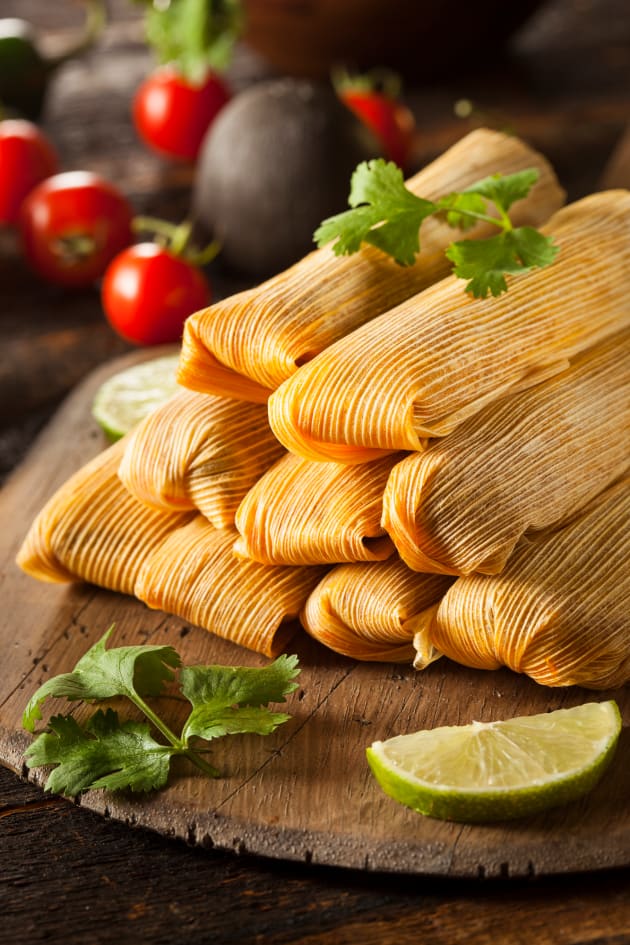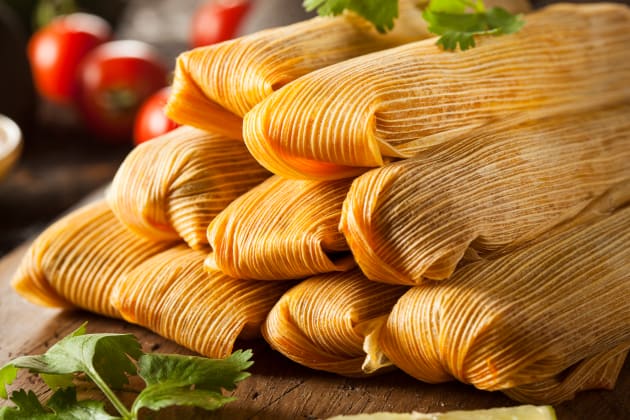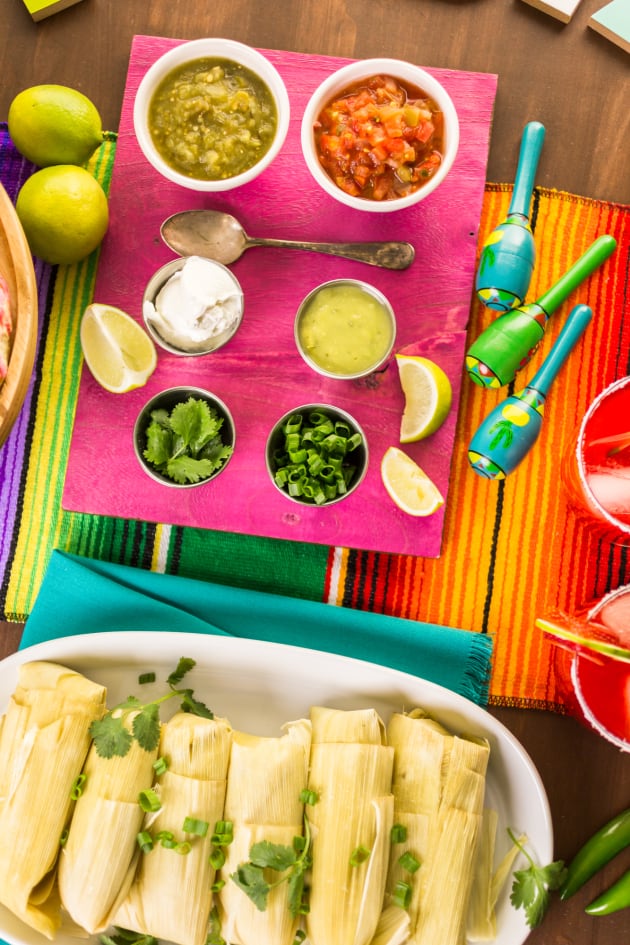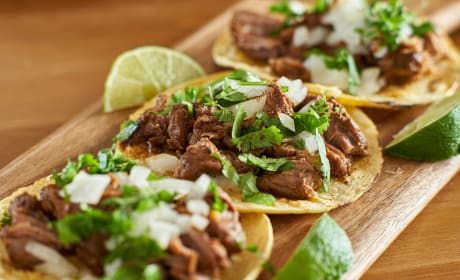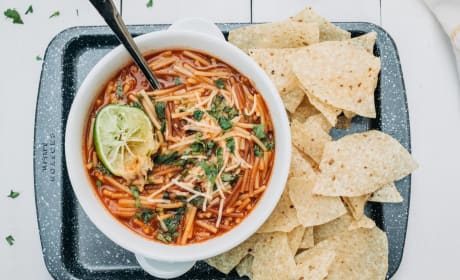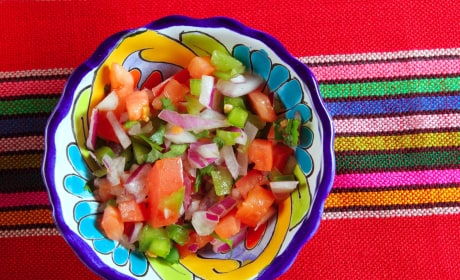How Long Do Tamales Last in the Fridge?
Nicole AustinIf you've ever had tamales, you know how delicious they are. But do you know how to store them?
Tamales are a traditional dish in Central and South American countries.
Most people in the United States are presently familiar with the popular Mexican tamale. The traditional Mexican dish is what you’re most likely to find at vendors, restaurants, or a grocery store.
Dating back several centuries, tamales have an interesting history of slowly evolving over time with cultural and ingredient supply changes.
Homemade tamales are as basic or as complex as you want them to be, and while any new recipe can be intimidating, making tamales from scratch is actually a lot simpler than you might think!
If you have ever made or purchased tamales, you may be wondering how long they will keep in the fridge.
How Long Can Tamales Last in the Fridge?
When vacuum-sealed, leftover tamales can last in the fridge for up to 3 weeks.
This is because the food does not make contact with air, so moisture cannot evaporate and it’s an excellent barrier from the elements.
Vacuum-sealed food lasts 3 to 5 times longer than traditionally stored or packaged food.
This makes vacuum sealing your tamales a great way to prevent bacterial growth and other telltale signs of spoilage if you wish to keep them refrigerated and eat them within the next couple of weeks.
If you don’t have a vacuum sealer, tamales stored using an airtight container, storage bag, or wrapping can be kept in the fridge for up to 5 days.
But as a rule of thumb, we suggest eating them within the first 4 to be safest.
If your tamale smells bad or has a slimy texture, consider it lost.
Food that has gone bad is not safe to eat because it may contain harmful bacteria or germs that can make you seriously ill.
Regardless of how short or long the refrigeration duration is, food can spoil.
So, go with your gut on this one and toss anything that is questionable. It’s not worth the risk!
Be sure you know how long all your favorite foods last in the fridge so you don't have to throw anything away.
Can You Freeze Tamales?
Not only is freezing delicious tamales super simple, it is also a very common method for preserving an entire batch of these delicious treats.
Tamales are one of those foods that you can prepare in large batches, and if you’ve already set aside time to make them, you may as well go all out.
You can freeze tamales both before and after they have been cooked.
If you freeze them before they’ve been cooked, thaw them overnight in the fridge to make sure they thoroughly defrost.
Blot them dry to remove any excess moisture that may make your tamale soggy.
Then prepare them as you would any raw tamale.
But don’t leave them in your fridge thawed for days — try to wait to thaw until the night before you’ll cook them.
If you freeze them after they have been cooked, simply reheat them per your preference.
Most people recommend freezing tamales after they have been fully steamed.
Wait until they are completely cooled to room temperature and pat them dry, then place them in freezer bags or vacuum seal them for best results.
This helps avoid freezer burn or future soggy tamales.
Air-tight containers or a Ziploc bag best preserves leftover cooked tamales regardless of the different ingredients you used.
Getting out as much air as possible is the best way to save this main course for a long time and to allow you to reheat tamales in a couple of months.
Depending on the method you use to seal and store your tamales, they will last anywhere from 6 months (traditional freezer bag storage) to a year or more (vacuum sealed).
Make sure to label them with a date of freezing or best-by date!
How Can You Reheat Frozen Tamales?
Tamales that have been cooked and then frozen can be reheated several different ways!
What reheating process you choose will depend on the time you have and your cooking method preference.
Steamer or Steamer Basket
* Temperature: High
* Time (from frozen): 30-45 minutes
* Time (thawed): 20 minutes
Pot with Steamer Insert
* Temperature: High, boiling water
* Time (from frozen): 30-45 minutes
* Time (thawed): 20 minutes
Rice Cooker
* Temperature: High
* Time (from frozen): 20-30 minutes
* Time (thawed): 15-20 minutes
Instant Pot or Pressure Cooker
* Temperature: High
* Time (from frozen): 15 minutes
* Time (thawed): 10 minutes
Microwave
* Temperature (from frozen): Medium
* Temperature (from thawed): High
* Time (from frozen): 3 minutes, flip over, 2 minutes
* Time (thawed): 1 ½ minutes, flip over, 1 minute
Note: Be sure to use a microwave-safe plate!
Oven
* Temperature: 350°F
* Time (from frozen): 25-35 minutes
* Time (thawed): 15-20 minutes
Pot with Boiling Water
* Temperature: High to boiling
* Time (from frozen): 10-15 minutes
* Time (thawed): 8-10 minutes
Once the tamales have been frozen and reheated, it is not recommended to freeze them again.
While it is technically safe, it will continue to compromise the integrity of your ingredients.
This will eventually leave you with food that is not enjoyable.
Each freeze creates a loss in moisture that may eventually be difficult or impossible to recover from.
How to Fix Soggy Tamales
Few things in the kitchen are as frustrating as your outcome not working out as expected.
A soggy tamale lacks the firmness and texture you expect from a fresh one, and will make it much harder to enjoy.
Allow tamales to cool for 10 to 15 minutes after cooking to see if they firm up well.
This gives it time for the soft interior to harden appropriately.
If this step doesn’t work, you can still save your tamale.
Drain off as much excess moisture as possible and blot with a paper towel.
Bake in the oven on a sheet pan for 10 minutes at 350°F to regain crispness and evaporate all that extra moisture.
Can You Bake Tamales?
You can bake tamales, and the result is a delicious, warm tamale, just as it would be steamed!
The texture may slightly change due to the alternate method, but not enough for us to discourage cooking tamales in the oven.
The secret to a perfect oven tamale is wrapping them tightly in two layers of aluminum foil and heating them at a lower temperature to retain moisture.
How to cook a thawed or fresh tamale in the oven:
* Preheat oven to 350°F.
* Wrap tamales individually in two layers of aluminum foil to seal them tightly.
* Place on a clean baking sheet and bake for 10 minutes.
* Check tamales for doneness. They should be a warm, golden brown color and cooked through. If they are not done, check at 10-minute intervals until they are a rich, golden brown.
* Remove the tamales from foil and allow them to cool for 10 minutes before serving.
How to cook a premade frozen tamale in the oven:
* Preheat oven to 350°F.
* Place pre-wrapped or newly-wrapped tamales on a baking sheet. The tamale should be tightly wrapped in two layers of aluminum foil, either prior to freezing or prior to heating.
* Bake for 25-35 minutes total, turning halfway for even cooking.
* Check the tamales to see if they are heated through and golden brown in color.
*Re-wrap and bake for an additional 10 minutes at a time, if necessary, until tamales are done.
* Unwrap from foil and allow to cool for 10 minutes prior to serving.
How Do You Eat a Tamale?
Tamales are wrapped in banana leaves, plantain leaves, or corn husk wrappers.
If you’re eating a tamale for the first time, don’t make the mistake of eating the banana leaf or wrapping!
While it isn’t necessarily dangerous, the exterior wrapping of a tamale is there for cooking purposes. It can cause an upset stomach, and is a choking risk for small children or the elderly.
Unwrap your delicious tamale and cover it with any fixings that you prefer. Salsa, sour cream, and pico de gallo are some of the most popular choices.
Or, eat as-is! You can’t go wrong with a tamale.
Be sure you know how long all your favorite foods last in the fridge so you don't have to throw anything away!
Nicole is a self-published author of fiction novels, and a lover of food and spending time in the kitchen with her six children. She lives in coastal Maine where she loves exploring new recipes especially those that can save time, money and wow a crowd.
Tags: Tamales, How To Guides, Mexican


